love rocks
Love Rocks in Japan: A Romantic Shinto Tradition!

Tokyo Terry
Posted on January 27, 2025
Share:
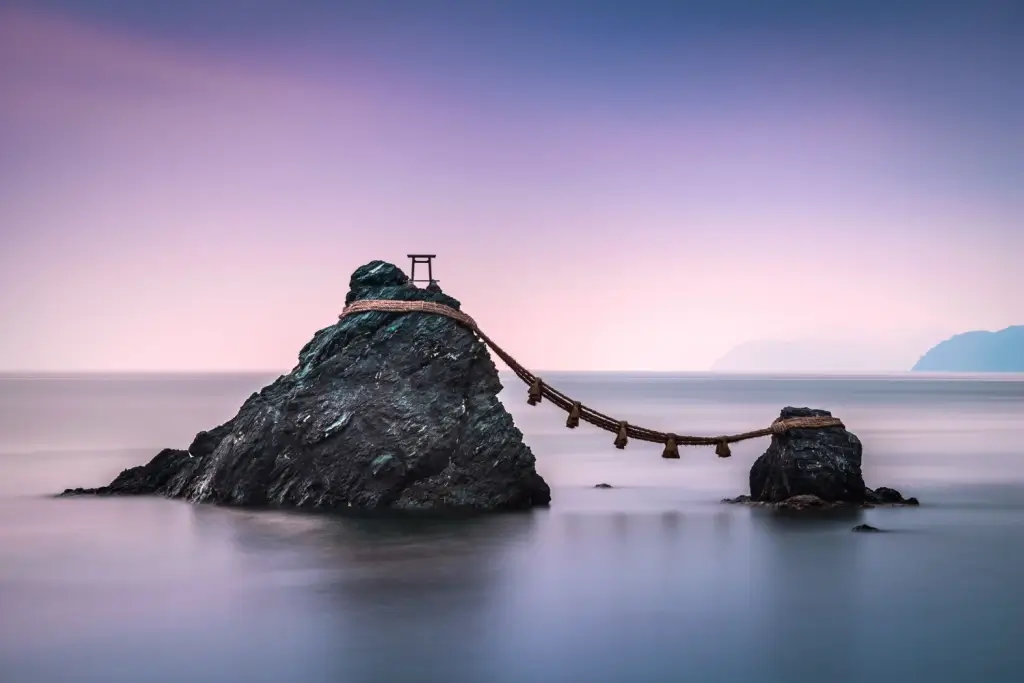
Beautiful rock formations have special significance in cultures all over the world. Japan is dotted with such sites, each of which carries special significance. Ancient myths and beliefs root their meanings in cultural tradition. On a deeper level, they are reminders of the spiritual connection between nature, humans, and the gods. One of these examples are the “love rocks”.
People enjoy them as symbols of togetherness and love. Every year, they attract thousands of couples seeking blessings for their relationships and tourists simply hoping to enjoy a beautiful view. Today, we’ll explore these interesting features that combine nature, love, and Japanese religion.
What are love rocks?
English speakers call these rock formations “love rocks”, “wedded rocks”, or “marital rocks”. Japanese people know them as meoto iwa, meaning “husband-wife rocks”. These naturally paired rock formations represent sacred sites deeply rooted in Japanese cultural traditions and local mythological legends.
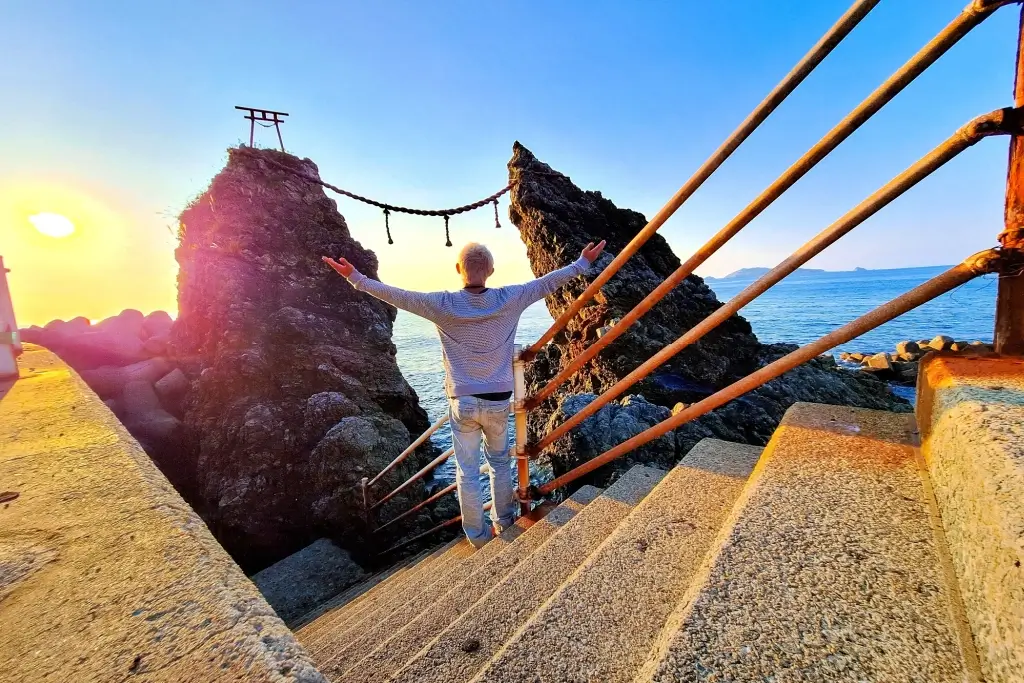
People believe they represent the male god responsible for all creation, Izanagi, and his wife, Izanami. Thick hemp or rice straw ropes called shimenawa connect the stones to show the union of these male and female deities and celebrate the strength of human relationships. Meota iwa have inspired many a love story throughout history to modern times.
Meoto Iwa (Mie and Fukuoka Prefectures)
It is believed that the gods created all the Japanese islands from this location on the border of Mie and Fukuoka Prefectures. These particular outcrops are likely the most popular meota iwa in Japan. The site offers picturesque views, especially during sunset.
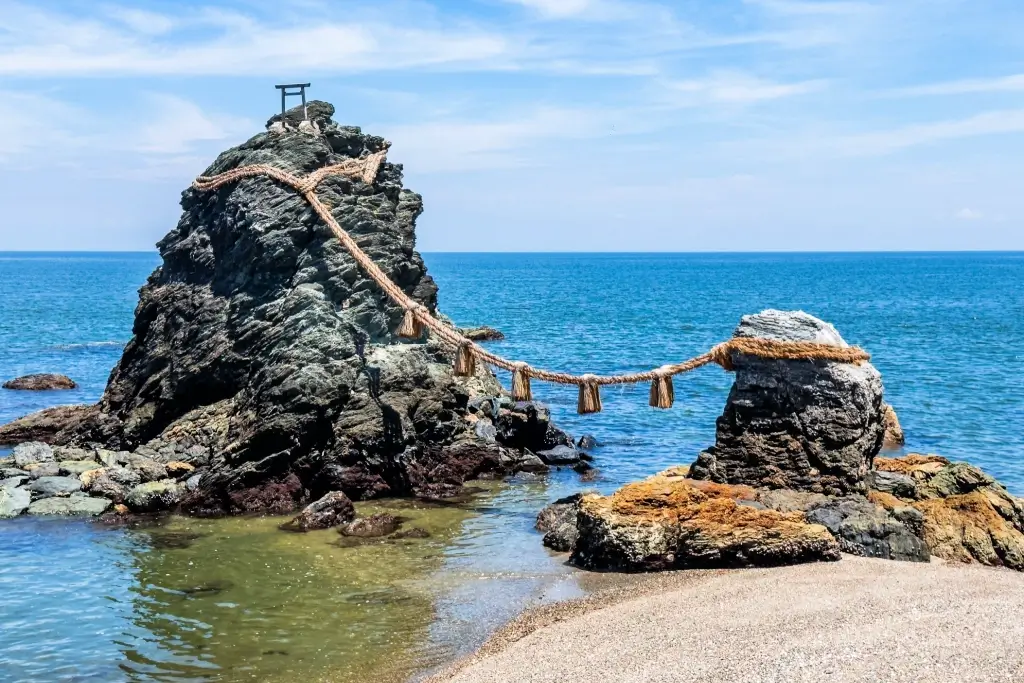
Meoto Iwa is a 15-minute walk from JR Futaminoura Station or a 10-minute bus ride from Chikuzen Maebaru Station. The rock formation is closely linked to the nearby Futami Okitama Shrine, which is famous for its frog statues and is believed to have wish-granting powers.
Hatago-Iwa (Ishikawa Prefecture)
The entire Noto Kongo Coastline offers great coastal views and stunning sunsets, but Hatago-Iwa in the Hakui District may be the most popular spot along the coast. According to legend, it is linked to the deity Nunakiirihime no Mikoto, who introduced weaving to the region.
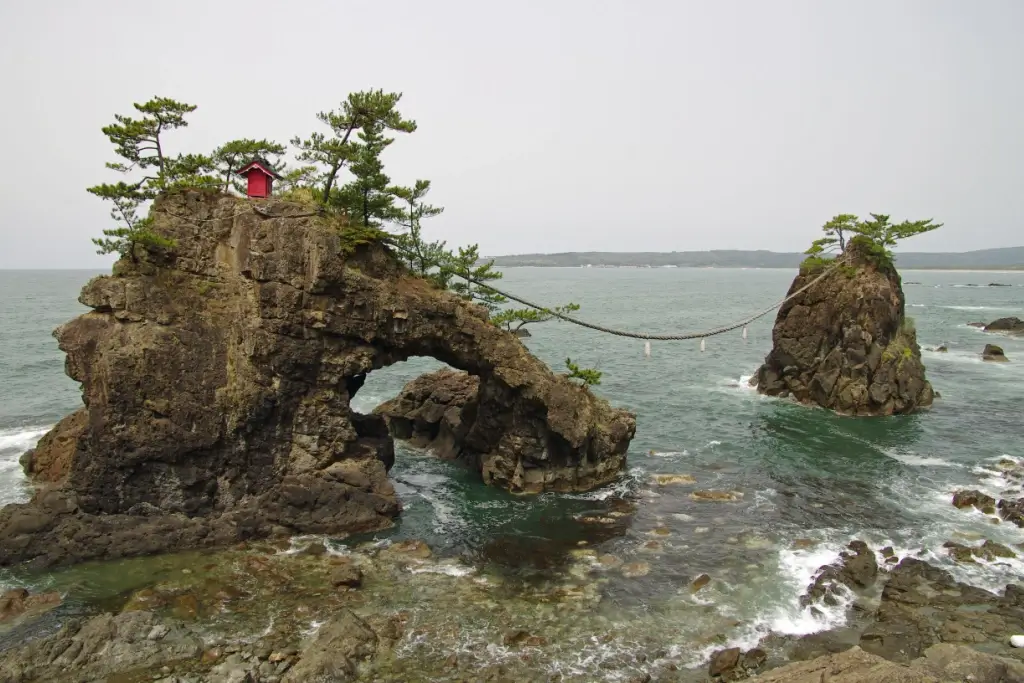
The story came about because the two uniquely shaped rocks resemble Japanese weaving tools. Hatago-Iwa has a striking archway illuminated during specific periods, creating a mystical evening experience. Visitors can reach Hatago-Iwa by taking a Hokutetsu bus from JR Hakui Station to the Shitsumi bus stop. From there, it’s only a 10-minute walk.
Are you looking for great snacks for Valentine’s Day? Check out Sakuraco! Sakuraco delivers traditional Japanese snacks, teas, and sweets from local Japanese makers directly to your door so you can enjoy the latest delicacies directly from Japan!
Husband and Wife Rocks (Fukushima Prefecture)
Husband and Wife Rocks are located on the banks of the Aga River in the Minamiaizu District of Fukushima Prefecture. These two towering boulders are 23 and 26 meters tall and are actually one rock that split vertically into two tens of thousands of years ago. Despite this fact, they have become known as moto iwa because they resemble a couple standing side by side.
These enormous boulders can be conveniently viewed from an observation deck on the opposite side of the river. The observation deck is a short walk from Yunokamionsen Station on the Aizu Tetsudo Line. Visitors can also explore the many hot springs in the surrounding village.
Tsurigane Cave (Iwate Prefecture)
Kuji City’s wedded rocks are on the Kosode Coast in Iwate Prefecture. One of these two large stone islands contains an archway known as Tsuriganedo Cave. This natural attraction draws people from all over Japan. During some sunrises, the cave is illuminated with red light. However, the effect is only visible for three weeks leading up to and following the summer solstice. During this time, the sunrise aligns perfectly with the opening.
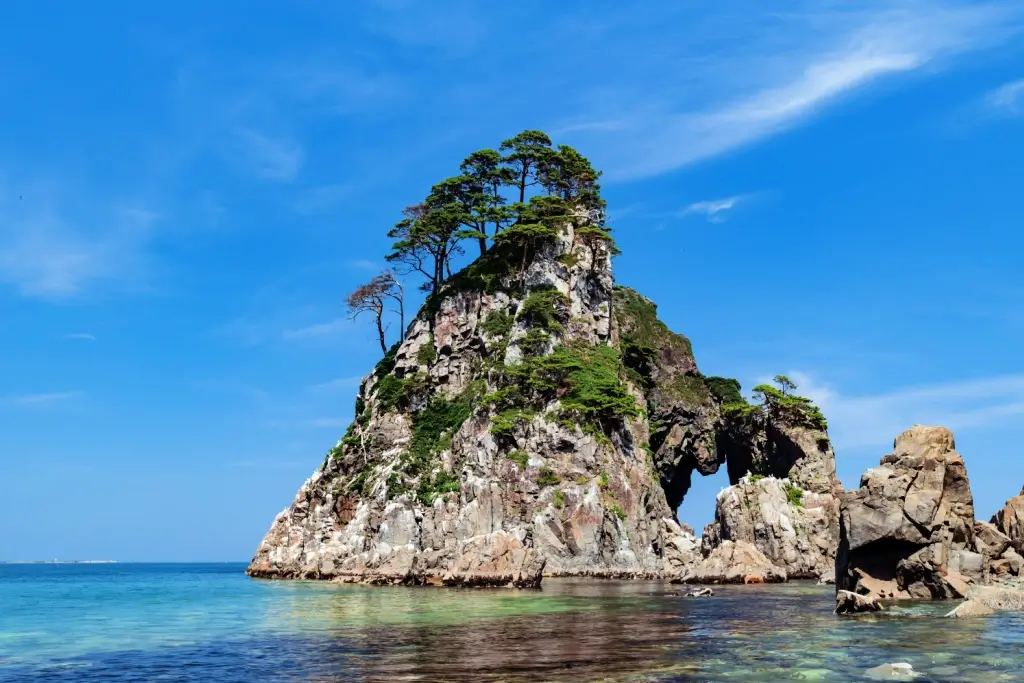
There aren’t many public transportation options in this area. The Kenritsu Kujibyoin bus stop is a half-hour walk from tiny Rikuchu Natsui Station. From there, public buses leave for Gojonotaki and the nearby viewing area. During the summer, it is also possible to see traditional ama divers catching sea urchins (uni) and abalone.
Why are love rocks important in Japan?
Love rocks are important in Japan because they represent the Japanese reverence for nature. Beyond their spiritual meaning, they are symbols of the bond between husband and wife, a celebration of marital harmony and spiritual union. They are also romantic pilgrimage sites for couples seeking blessings and harmonious relationships.
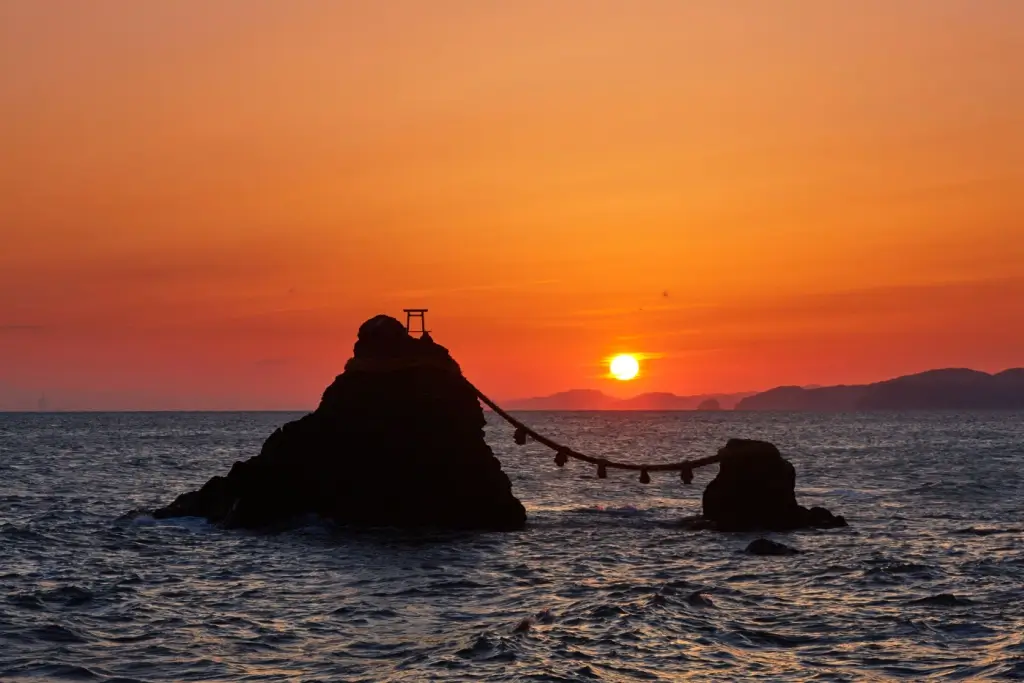
These same stones are also popular tourist destinations and attract visitors to parts of Japan that are usually secret. Whether nestled along rugged coastlines or standing quietly in serene landscapes, they are a different way to experience Japan’s natural beauty and culture. Have you visited any of these love rocks, or any of the festivals held at these special spots? Perhaps you know of some that haven’t been mentioned. Share your experiences in the comments below!

Discover authentic flavors with Sakuraco
Get Sakuraco 

Discover authentic flavors with Sakuraco
Get Sakuraco 
Related Articles
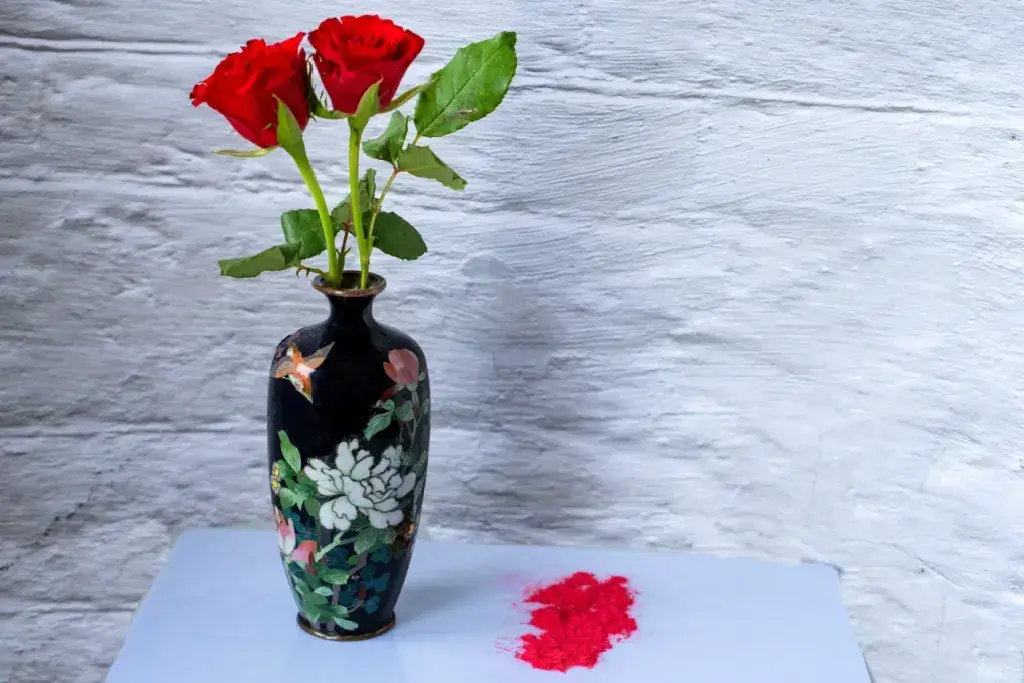
Japanese Ceramics: The Alluring Wares of Shippo Yaki
Imagine holding a small dish that glows as if sunlight is trapped inside it. This perfect example of Japanese ceramics resembles glass, with its colors deep and luminous, outlined with threads of silver. That’s the magic of shippo yaki.

Izakaya: The Quintessential Heart of Japanese Dining
From small corner shops with paper lanterns to busy chain restaurants near train stations, izakaya are a fixture of Japan’s social life.
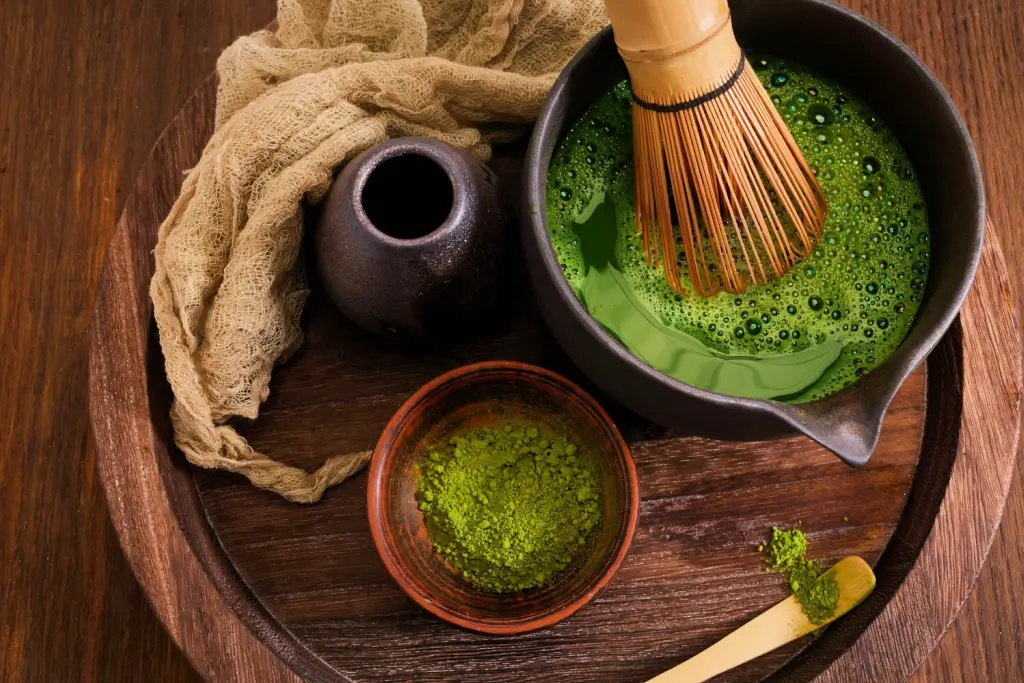
The History of Chanoyu: The Japanese Tea Ceremony
Japan is often linked with peaceful gardens, quiet temples, and wooden tea houses where a graceful tea ritual occurs. This is chanoyu (the Japanese tea ceremony), a practice that is much more than drinking Japanese green tea. Starting with Zen Buddhism, which has been refined over centuries, it combines art, religion, philosophy, and social life into one mindful tradition.

Omamori: The Traditional Japanese Good Luck Charm
In Japan, daily life often blends tradition with modern convenience. You might walk past a vending machine right after visiting a centuries-old shrine. One tradition that has stayed strong over the years is the use of omamori—Japan’s beloved good luck charms.



